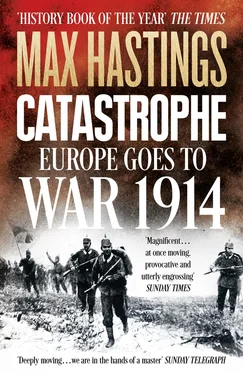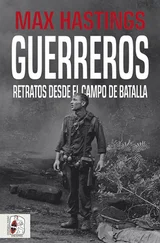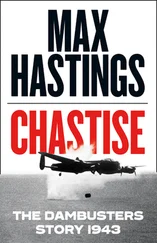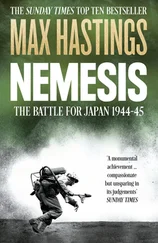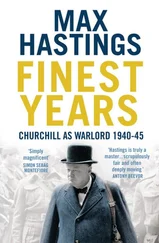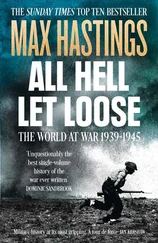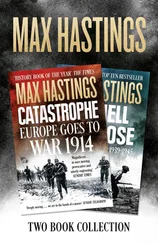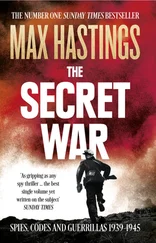Literary Review
‘A typically thrilling combination of verve and scholarship. He paints on the broadest possible canvas while retaining an eagle eye for the illuminating life, the singular experience, the remark that brings alive the stupidity, the courage and, above all, the confusion’
The Times
‘Hastings does an excellent job of assembling a chronicle of the war’s first few months … and skilfully marshals evidence assembled by several generations of scholars into a highly readable narrative that should be the last word on the subject’
New York Times Book Review
‘Immensely readable epic history’
PATRICIA NICHOL, Metro , Books of the Year
‘Max Hastings easily saw off his rivals in the battle for the First World War centenary market … old-fashioned military history, shamefully readable’
Observer , Books of the Year
‘Does the world need another book on that dismal year? Absolutely, if it’s by Hastings … Readers accustomed to Hastings’ vivid battle descriptions, incisive anecdotes from all participants, and shrewd, often unsettling opinions will not be disappointed. Among the plethora of brilliant accounts of this period, this is one of the best’
Kirkus
‘Authoritative and immensely readable’
Prospect
‘If you’re going to read only one history of World War I, the chances are this is going to be it. Hastings is blistering about the incompetence of the commanders-in-chief on all sides. However it’s Hastings’ depiction of the cost of the war on the soldiers and their families that really gives Catastrophe its power’
JOHN PRESTON, Daily Mail , Books of the Year
‘This excellent chronicle of World War I’s first months dispels some popular myths’
New York Times
‘Writing with marvelous cogency and trenchancy … a valuable contribution’
PIERS BRENDON, Independent
‘Invites consideration as the best in his distinguished career, combining a perceptive analysis of the Great War’s beginnings with a vivid account of the period from August to September of the titular year’
Publishers Weekly
‘Admirable in its scope and vividly told’
Independent on Sunday
‘Truly a masterpiece. What [Hastings] does, in the same absorbing style that we enjoyed in All Hell Let Loose , is to explain how the Great Powers got into it, and he does so with commendable clarity … The extent of his research is truly impressive … a book that is as enjoyable to read as it is important historically’
Country Life
For
PENNY
who does the real work
Cover
Title Page
Copyright
Praise
Dedication
List of Illustrations
List of Maps
Introduction
1914 Chronology
The Organisation of Armies in 1914
Prologue: SARAJEVO
1. ‘A Feeling that Events are in the Air’
1. CHANGE AND DECAY
2. BATTLE PLANS
2. The Descent to War
1. THE AUSTRIANS THREATEN
2. THE RUSSIANS REACT
3. THE GERMANS MARCH
4. THE BRITISH DECIDE
3. ‘The Superb Spectacle of the World Bursting Into Flames’
1. MIGRATIONS
2. PASSIONS
3. DEPARTURES
4. Disaster on the Drina
5. Death with Flags and Trumpets
1. THE EXECUTION OF PLAN XVII
2. ‘GERMAN BEASTLINESS’
3. LANREZAC ENCOUNTERS SCHLIEFFEN
6. The British Fight
1. MONS
2. LE CATEAU: ‘WHERE THE FUN COMES IN, I DON’T KNOW’
7. The Retreat
8. Tannenberg: ‘Alas, How Many Thousands Lie There Bleeding!’
9. The Hour of Joffre
1. PARIS AT BAY
2. SIR JOHN DESPAIRS
3. SEEDS OF HOPE
10. The Nemesis of Moltke
1. THE MARNE
2. ‘STALEMATE IN OUR FAVOUR’
11. ‘Poor Devils, They Fought Their Ships Like Men’
12. Three Armies in Poland
13. ‘Did You Ever Dance With Him?
1. HOME FRONTS
2. NEWS AND ABUSE
14. Open Country, Open Sky
1. CHURCHILL’S ADVENTURE
2. ‘INVENTIONS OF THE DEVIL’
15. Ypres: ‘Something that was Completely Hopeless’
16. ‘War Becomes the Scourge of Mankind’
1. POLAND
2. THE SERBS’ LAST TRIUMPH
17. Mudlife
18. Silent Night, Holy Night
Picture Section
Keep Reading
Footnotes
Notes and References
Bibliography
Index
Acknowledgements
About the Author
By the Same Author
About the Publisher
Author’s note: Images of the campaigns of 1914 are rare. Those professing to portray combat are often posed or faked, and many contemporary captions are wilfully or accidentally inaccurate. The pictures in this book have been chosen with these realities in mind, to give the most vivid possible impression of what the battlefields looked like, while recognising that few can be appropriately placed and dated, and some predate the war.
Kaiser Wilhelm II (Popperfoto/Getty Images)
Poincaré and the Tsar, St Petersburg, July 1914 (© Interfoto/Alamy)
Asquith and Lloyd George (Private collection)
Pasic (Imagno/Getty Images); Berchtold (akg/Imagno); Sazonov (© RA/Lebrecht Music & Arts); Grey (Hulton Archive/Getty Images); Churchill (Hulton Archive/Getty Images); Bethmann Hollweg (DPA/Press Association Images)
Russians solicit divine assistance (Mirrorpix)
Moltke (The Granger Collection/Topfoto); Ludendorff (Hulton Archive/Getty Images); Hindenburg (Hulton Archive/Getty Images); Kitchener (Hulton Archive/Getty Images); Lanrezac (Mary Evans/Epic/Tallandier)
Conrad (© Ullsteinbild/Topfoto); Joffre (© Roger Viollet/Topfoto); French (© Roger Viollet/Topfoto); Haig (© Roger Viollet/Topfoto); Falkenhayn (Hulton Archive/Getty Images); Franchet d’Espèrey (DeAgostini/Getty Images)
Russians in Galicia (Mirrorpix)
Serbian troops advance (© Robert Hunt Library/Mary Evans)
Putnik (© The Art Archive/Alamy)
Potiorek (Getty Images)
Corporal Egon Kisch (© IMAGNO/Lebrecht)
Austrian troops conduct a mass execution of Serbian civilians (© Robert Hunt Library/Mary Evans)
An Austrian siege piece (Photo12/Ann Ronan Picture Library)
Kluck (akg-images)
Bülow (© INTERFOTO/Alamy)
French troops, before the deluge (© Roger-Viollet/Topfoto)
Belgians in action (Underwood Archives/Getty Images)
The legendary French soixante-quinzes (Roger-Viollet/Rex Features)
Smith-Dorrien (Mirropix)
Wilson, Foch and Huguet (Hulton Archive/Getty Images)
Murray (Universal History Archive/UIG/The Bridgeman Art Library)
Germans advance (RA/Lebrecht Music & Arts)
Frenchmen display offensive spirit (Mirrorpix)
Austro-Hungarian cavalry in Galicia (© Robert Hunt Library/Mary Evans)
The British deploy on their first battlefield (© IWM (Q 53319))
British troops await the enemy
Samsonov (DeAgostini/GettyImages)
Russians under attack
Russian prisoners after Tannenberg (© Robert Hunt Library/Mary Evans)
Rennenkampf (RIA Novosti)
Fortunino Matania’s painting of L Battery’s action at Néry (© David Cohen Fine Art/Mary Evans Picture Library)
The Middlesex under fire (R.C. Money. LC GS 1126. Reproduced with the permission of Leeds University Library)
A Suffolk girl at the handle of a Lowestoft tram (© IWM (Q 31032)
Russian soldiers in bivouac (David King Collection)
A Russian field hospital (David King Collection)
The Western Front, winter 1914 (© SZ Photo/Scherl/The Bridgeman Art Library)
Dorothie Feilding (Warwickshire County Record Office collections: CR2017/F246/326); Edouard Cœurdevey (Personal archives of Jean Cœurdevey); Jacques Rivière (All rights reserved. Private collection); Richard Hentsch (bpk/Studio Niermann/Emil Bieber); Paul Lintier (From Avec une batterie de 75. Le Tube 1233. Souvenirs d’un chef de pièce (1915–1916) by Paul Lintier, Paris 1917); Vladimir Littauer (From Russian Hussar by Vladimir S. Littauer, J.A. Allen & Co., London, 1965); Constantin Schneider (Constantin Schneider als Oberleutnant; Foto: Privatbesitz; Reproduktion: Salzburger Landesarchiv; aus: Veröffentlichungen der Kommission für Neuere Geschichte Österreichs, Bd. 95, Wien [u.a.] Böhlau, 2003); Lionel Tennyson (Tennyson Research Centre, Lincolnshire County Council); Venetia Stanley (© Illustrated London News Ltd/Mary Evans); Louis Spears (Patrick Aylmer); Helene Schweida and Wilhelm Kaisen (State Archive of Bremen); Louis Barthas (From Les Carnets de guerre de Louis Barthas, tonnelier, 1914–1918 © Editions de la Découverte. Paris. English edition to be published in 2013 by Yale University Press); François Mayer (© IWM Q 111149)
Читать дальше
